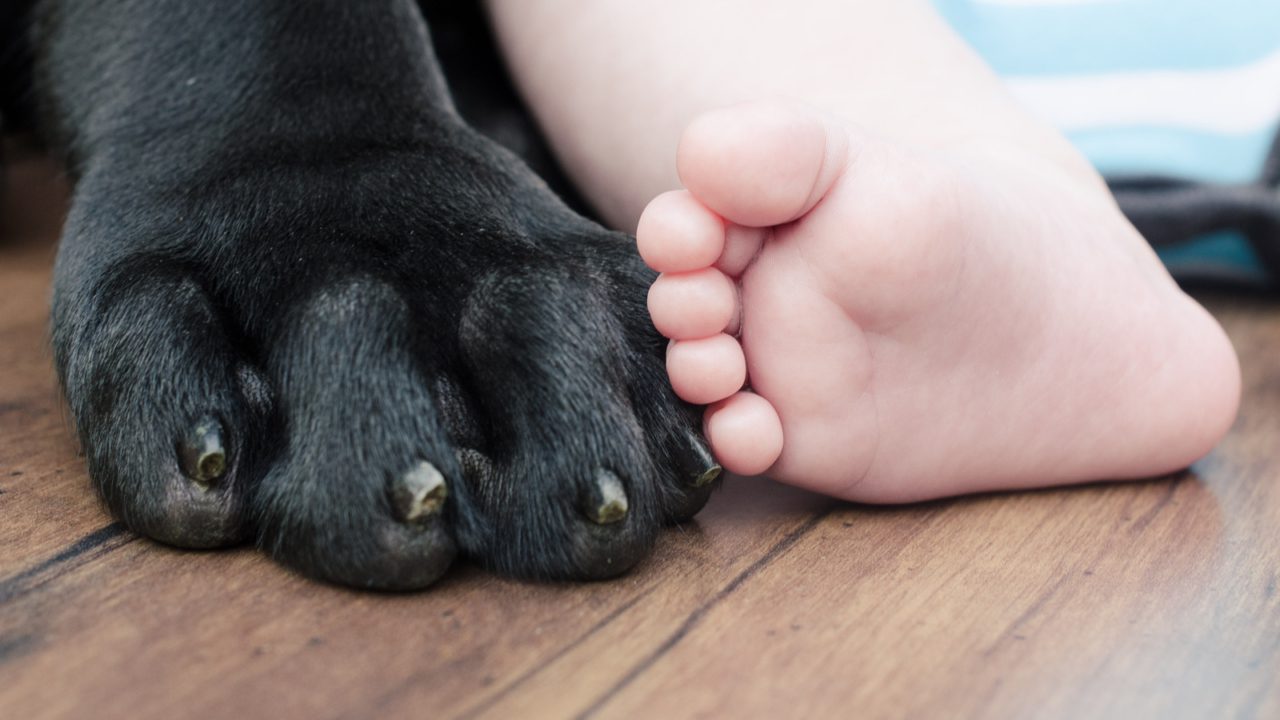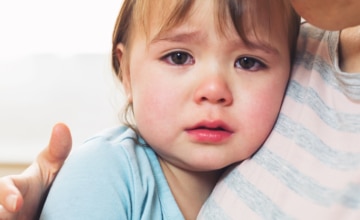I am not sure there is one. What I do know is that growing up with a pet can be an incredibly rich experience for a child. Having a dog teaches children about caring for another living being. And a pet often plays a very important role in a child’s life—as an unconditional and always faithful friend.
Keep in mind that 10-month-olds are captivated by their ability to “do to” things. They are delighted by cause and effect: If I do this, then that happens. So it is very normal and expected that, at this age, your baby might do a lot of things to the dog (pull its tail, put toys on its back) to see what will happen. There will be a fair bit of work for you in managing the relationship between your baby and the dog in order to ensure that each is safe and happy. This doesn’t mean that the answer is no to a pet, but it’s important to go in knowing what to expect.
It’s also very important to consider the individual characteristics of both your baby and the dog you are considering adopting. First and foremost, make sure the dog is child-friendly and gentle. Research which dogs are best for kids. Consider the age of the dog—puppies, while adorable, naturally go through a nippy, “mouthy” stage that might not work well with a baby or young toddler. Older dogs, selected for a more mellow, gentle temperament, can often be a good fit for young children. Whether you’re getting the dog from a breeder or shelter, visit it several times to gauge its temperament and to see how the dog reacts around both adults and kids. Bring your son with you but hold him the whole time so he and the dog can become familiar. When you are home, you will need to provide very close supervision of both baby and dog, and never leave them alone together. (I’ve been there—this is a major commitment!)
As your child grows, be very clear and firm in teaching him never to tease the dog, pull its tail or ears, play in or with its food bowl, or antagonize it in any way. A little pre-planning, and ongoing baby/dog management is a time investment for sure—but one that will give your child the special connection that only a pet can provide.




